
Sound



 Wavelengths and Frequencies in
Tubes
Wavelengths and Frequencies in
Tubes|
Standing waves:

The condition for standing wave is that
2L = n , where n = 1, 2, 3, . . .

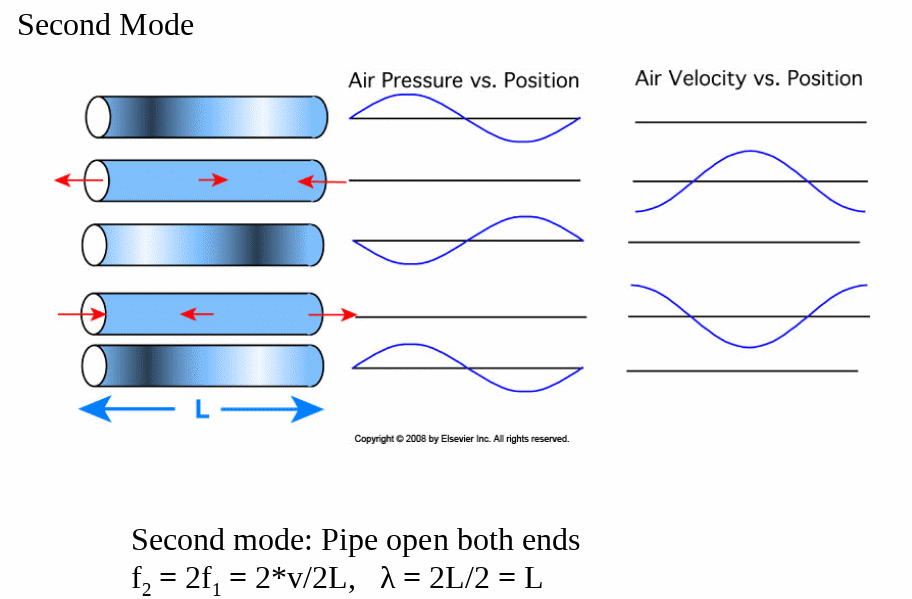
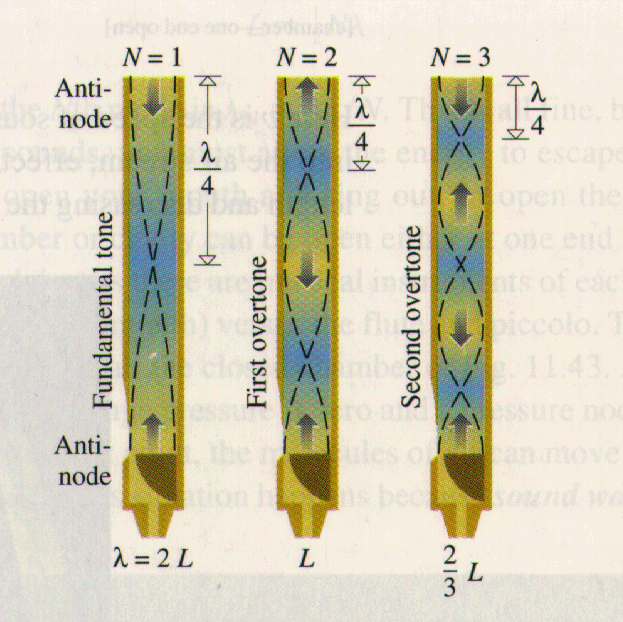 A few standing-wave modes for an organ pipe open at both ends. The arrows show the direction in which air moves for half the cycle, whereupon the mode reverses. Both ends of the tube are at atmospheric pressure and there are pressure nodes at both. Standing sound waves in a tube:
Condition: All harmonics are produced.
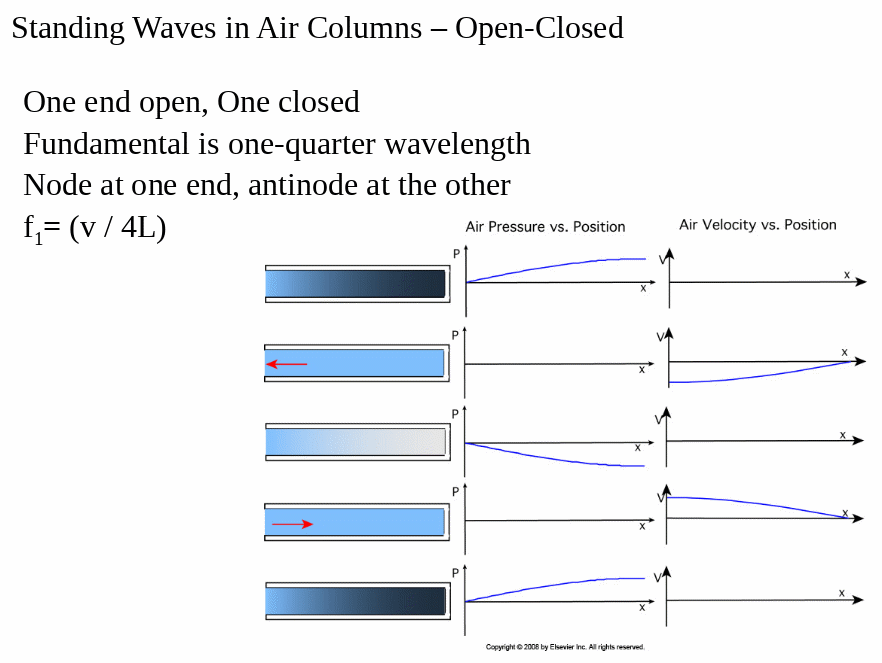
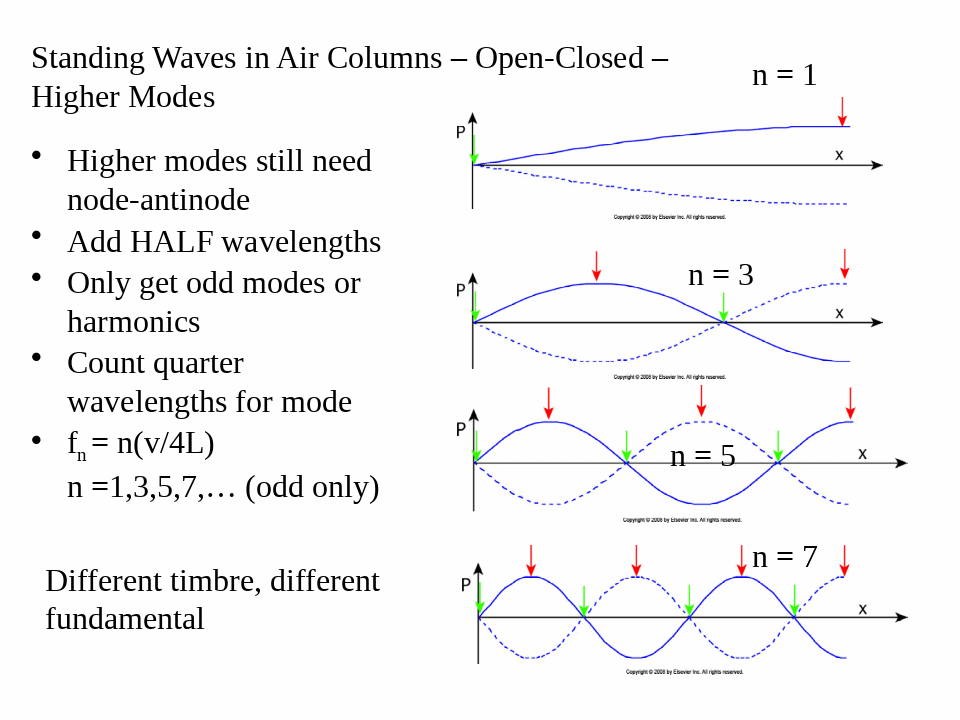
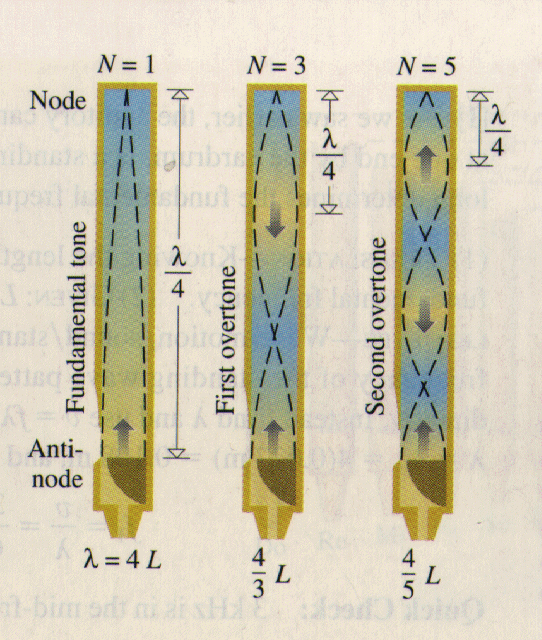
A few standing-wve modes for an organ pipe open at its lower end.
The arrows who the direction in which air moves for half the cycle,
whereupon the modes reverse. The dashed lines indicate the displacement nodes
and antinodes.
Anti nodes at one end
Condition: Only ODD harmonics are produced.
Standing waves in closed tubes
(Tubes)
|
| Wave Term | Colloquial | amplitude | = | loudness |
|---|---|---|
| frequency | = | pitch |
| attenuated | = | damped |
Sound travels at known velocity.
Speed of sound in Air :
| v = 342 m/s |
Sound travels faster in warmer air
Sound travels slower in cooler air
Water
| v = 1500 m/s |
 Reflection, Diffraction, Absorption and Refraction of Sound
Reflection, Diffraction, Absorption and Refraction of Sound
 Reflection: the sound can
bounce from a "stiff" barrier
(echo).
Reflection: the sound can
bounce from a "stiff" barrier
(echo).
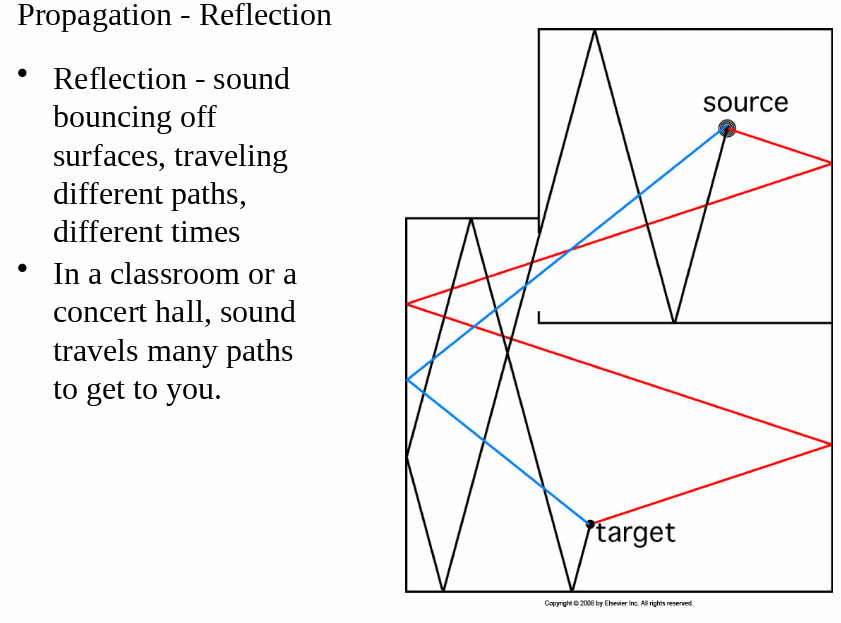
 Diffraction: the sound can
bend around a barrier.
Diffraction: the sound can
bend around a barrier.
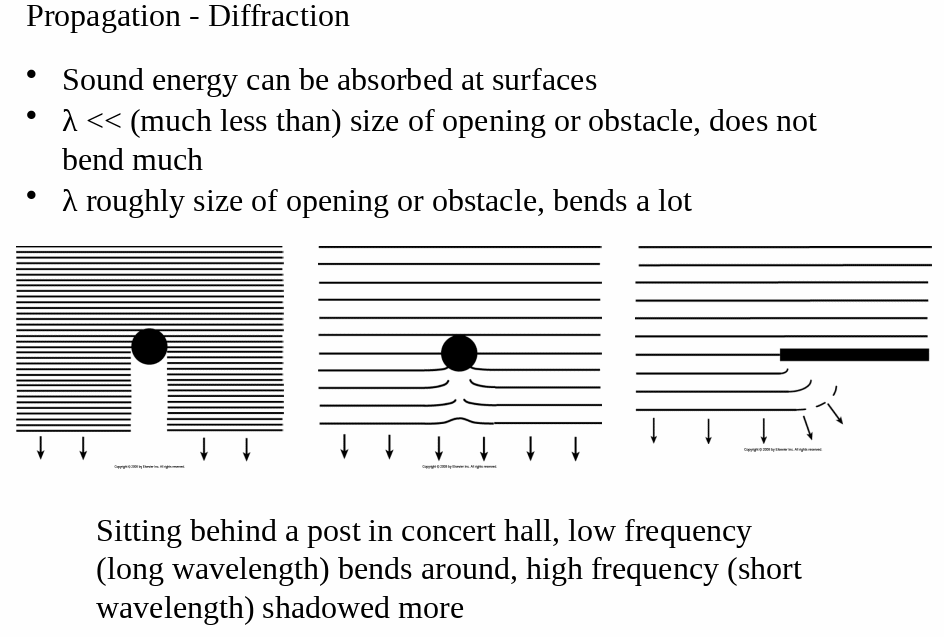
 Absorption: the sound can be
absorbed by materials.
Absorption: the sound can be
absorbed by materials.
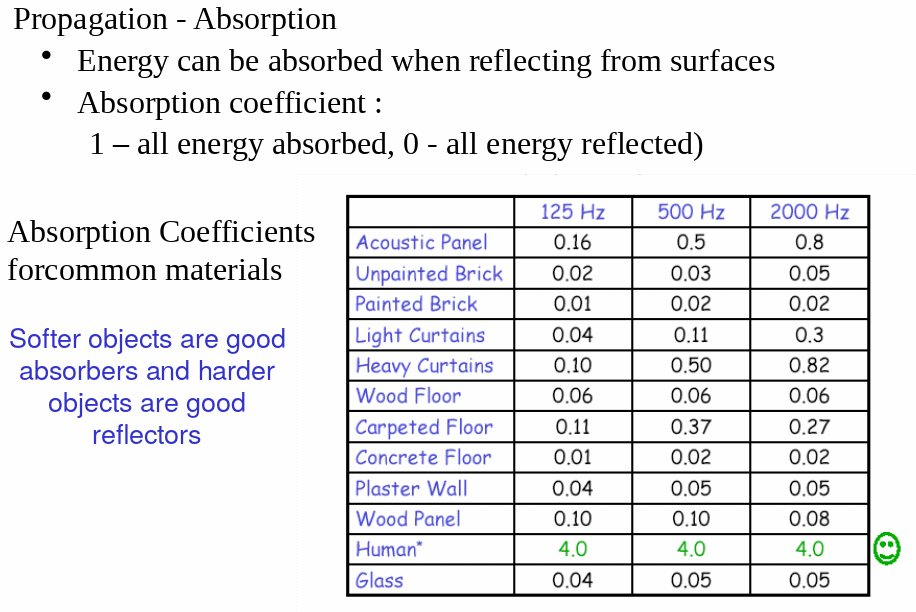
 Refraction: sound can
"bend" due to different air temperatures
Refraction: sound can
"bend" due to different air temperatures
(remember demonstration where a wave front of water wave was bent due to different depths of the ripple tank. Examlpe for sound: Ship horn in fog can be heard a longer distance due to temperature variations in the air.)

Ch. Elster